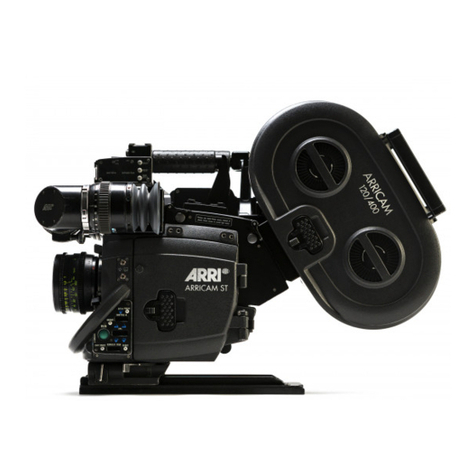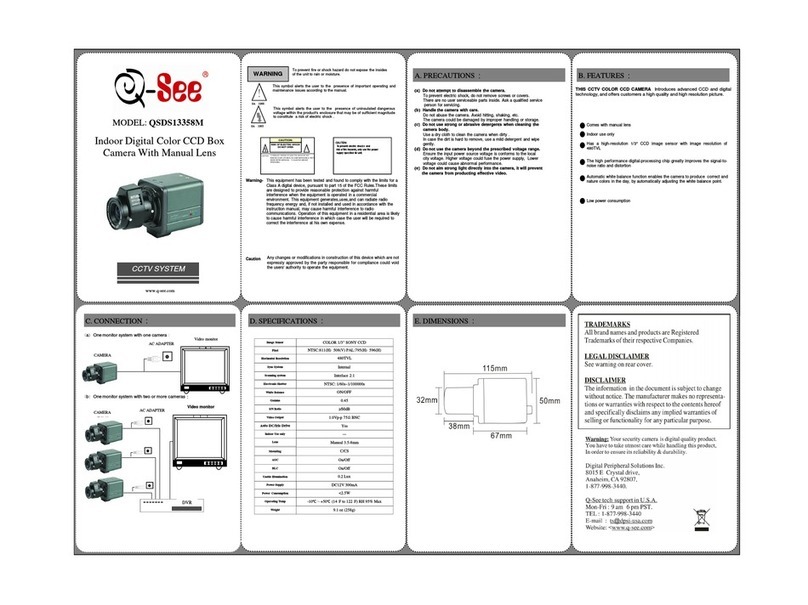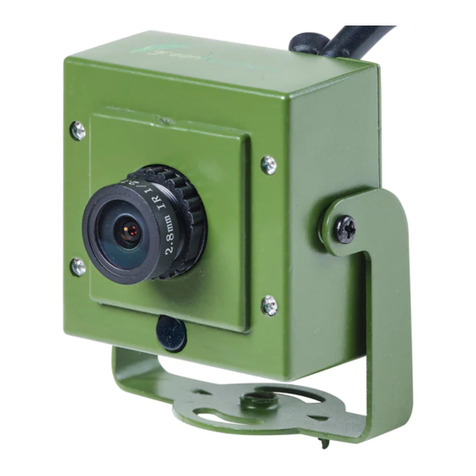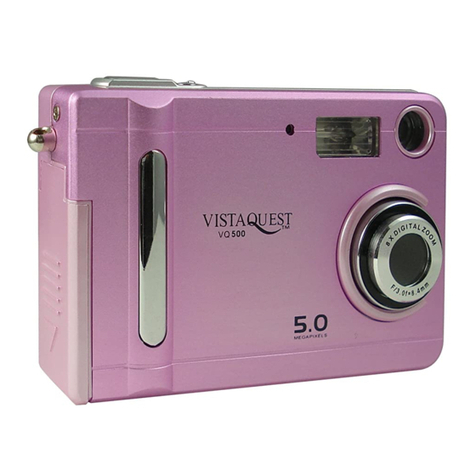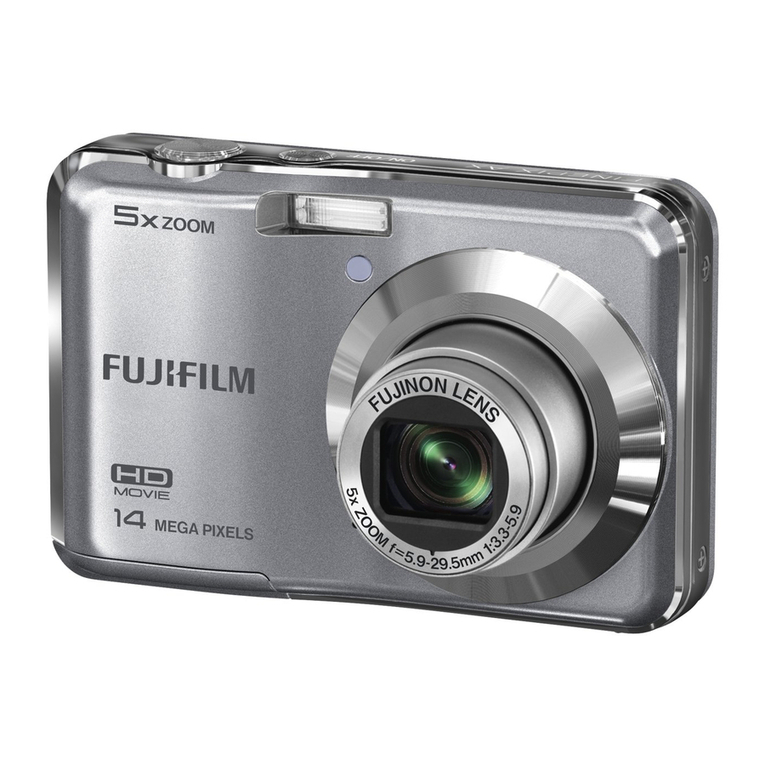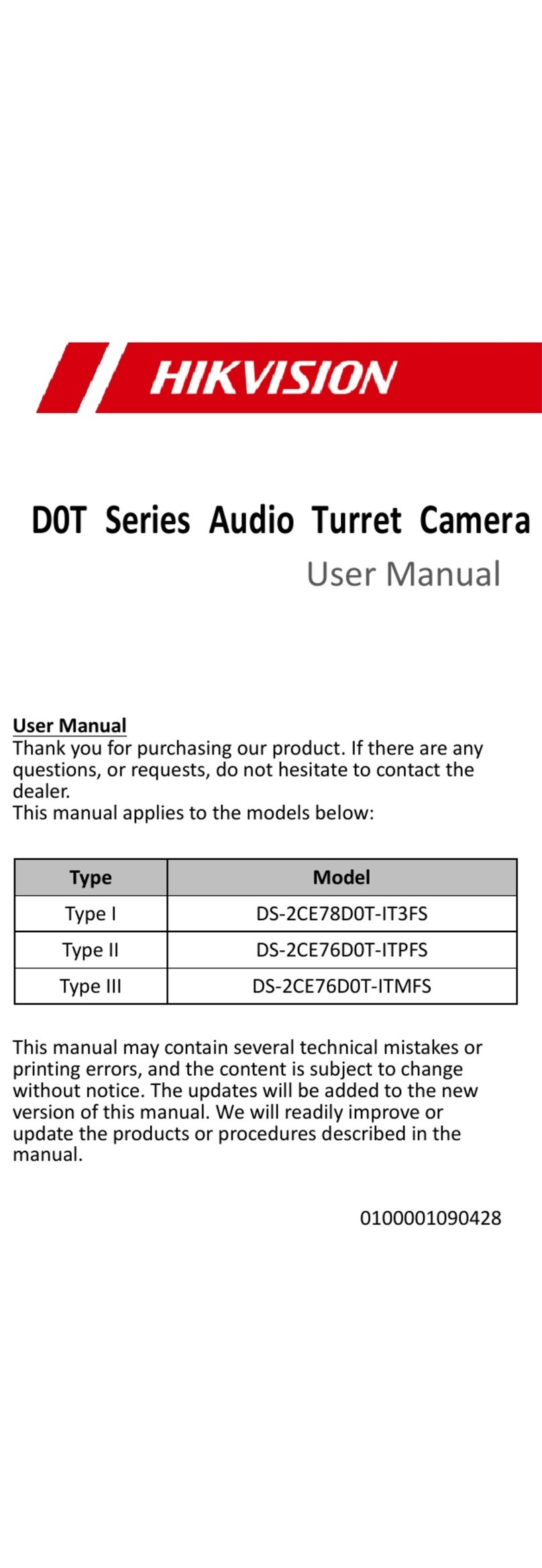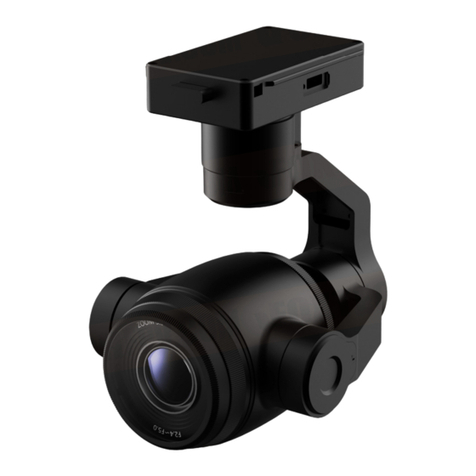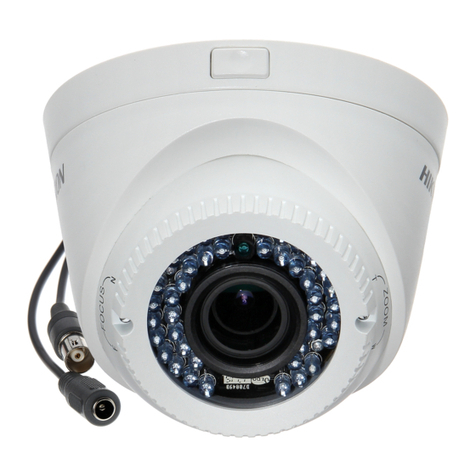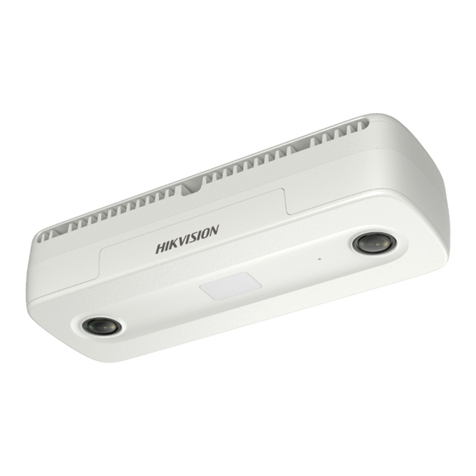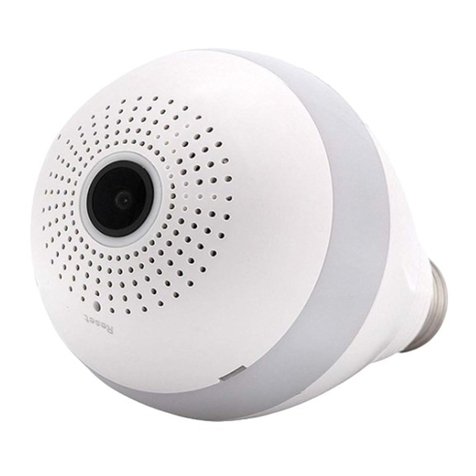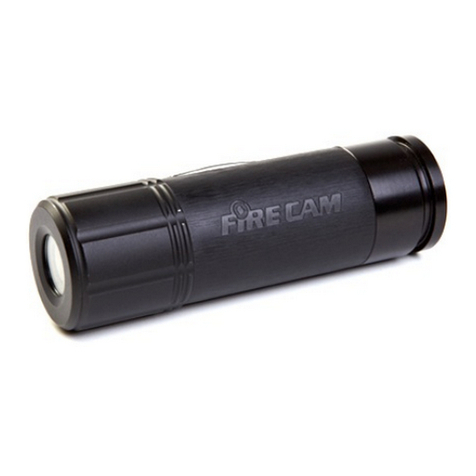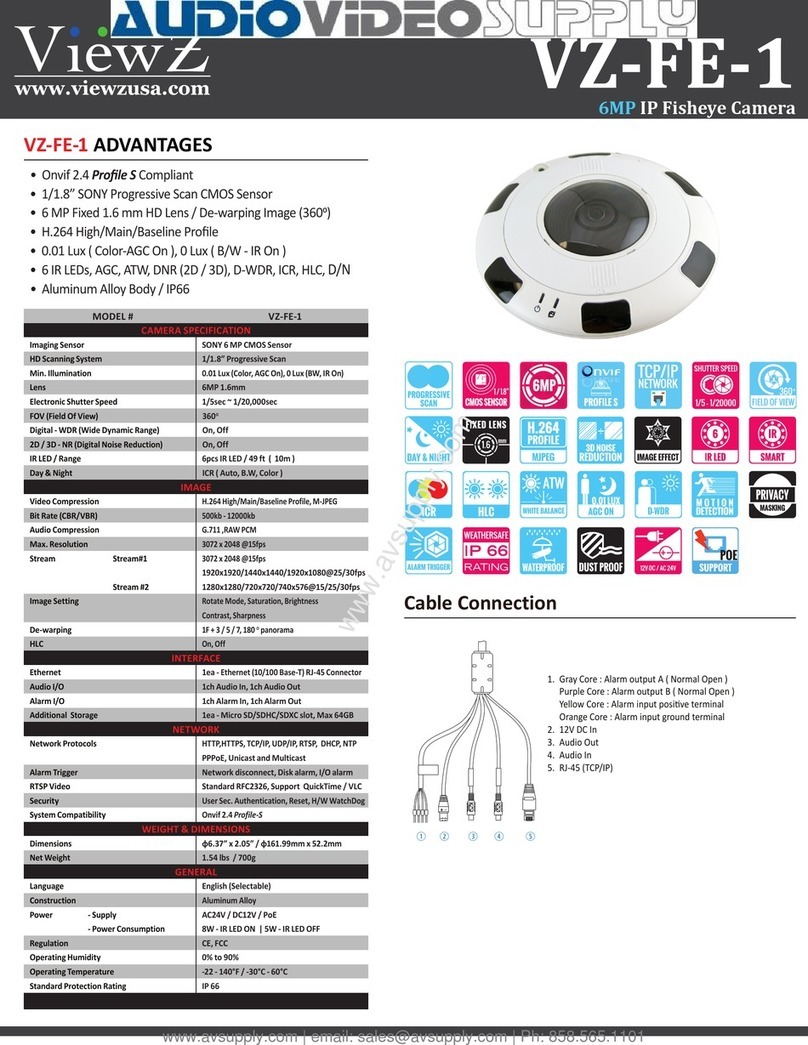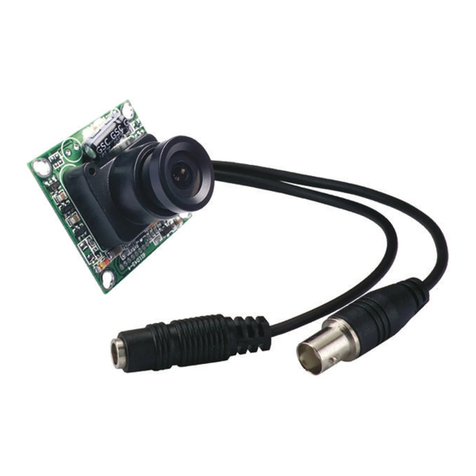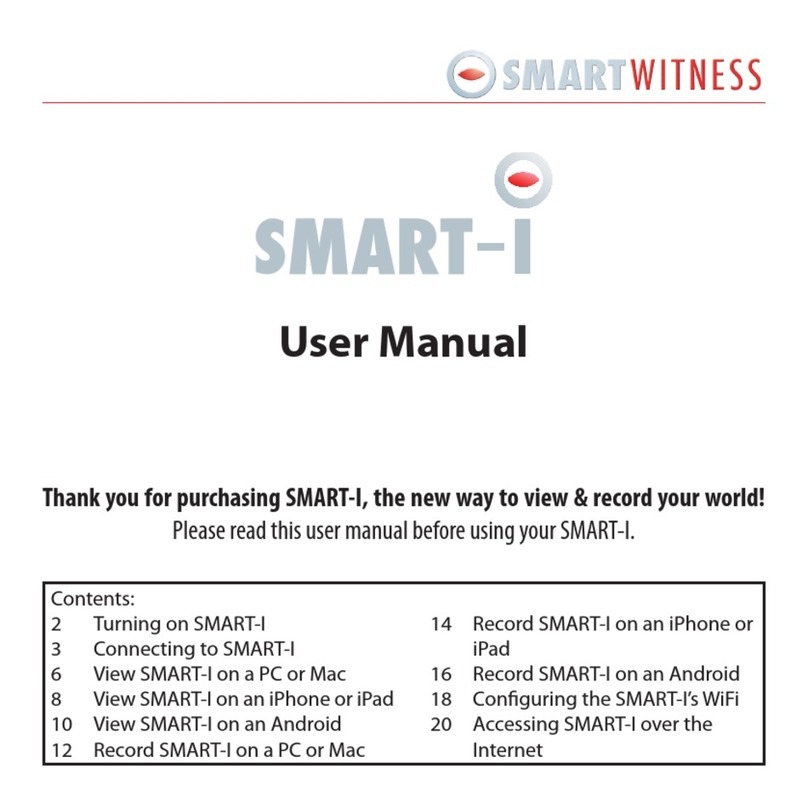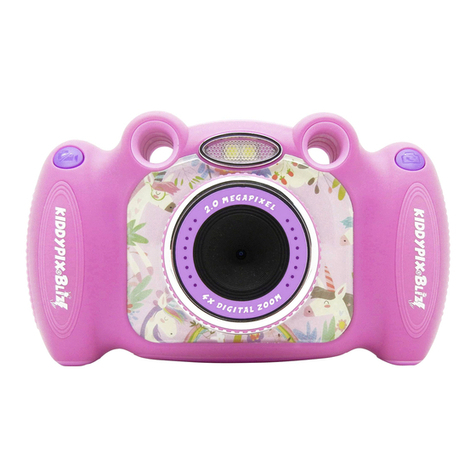ARRI ARRIFLEX 16 BL User manual

ARRIFLEX
1 BL
Mirror•.Reflex Motion Picture Camera for 16mm Film
Instruction Manual

Fig. I
89 10
17
18
13
Fig. II
10
9

Construction and Design:
The ARRIFLEX 16 BL is a noiseless 16 mm mirror reflex newsreel camera with electric
drive. In order to maintain the excellent technical features of the proven ARRIFLEX
models 16 St and 16 M (such as the precision film registration pin, forwarc:l and reverse
operation, tachometer, footage indicator, interchangeable motors, mirror reflex
system, etc.), achieve a low noise level and avoid excess weight, this new camera
has been built with a fully sound-proofed construction in which all components which
produce or conduct noise have been insulated within or upon the camera body. This
applies to the camera mechanism complete with the film transport system, the inter-
changeable motors, the lens, the viewfinder system, and the magazines. This con-
struction makes the ARRIFLEX 16 BL an extremely versatile, noiseless, and relatively
light-weight newreel camera which can be used equally well whether mounted upon
a tripod or hand-held, with or without a shoulder support. Taking today's highly
advanced zoom le.nses into consideration, the ARRIFLEX 16 BL has been constructed
with only one lens mount especially designed for the use of zoom lenses although
normal lenses may also be used. The lenses can be exchanged quite easily. The
ARRIFLEX 16 BL works with quick-changing magazines with built-in feed and take-
up mechanisms. The film transport is the same as in the ARRIFLEX 16 St and 16 M,
having a precision registration pin for forward and reverse operation. The viewfinder
system is different in some respects from other ARRIFLEX 16 models, the most impor-
tant difference being the relocation of the ground glass in the forward focal plane.
The ARRIFLEX 16 BL is operated in the same manner as the ARRIFLEX 16 M, with the
exception of the following changes:
The operating controls normally firmly coupled with the camera mechanism are in-
sulated in the ARRIFLEX 16 BL to prevent noise from being conducted from the camera
interior. This applies to the lens controls for focus (1/4), focal length (1/10 a. 11),
diaphragm (11/10), inching knob (111/1), re-set for the footage indicator (111/4), and
the two knurled disks (11/14) for taking up film slack in the magazine. The three lens
controls are connected to the lens by means of rubber elements. The latter four con-
trol knobs mentioned above are cornoletely disengaged and must be pressed in to
couple them with the gears of the camera mechanism. Important Never use the inch-
ing knob (111/1) while the camera motor is running
Fig- I
1 Knurled knobs for adjusting bellows
2 Matte box boom
3 Plexiglass window
4 One of three focusing grips
5 Lock: lens housing/camera
6 Magazi ne Iid lock
7 Exchangeable pilot tone and start marking unit
8 Lock to fi Iter door
9 Focus index mark
10 Special zoom lever
11 Focal length adjustment ring
12 Push button to unlock lens
13 Short periscopic viewfinder
14 Collar for mounting eyepiece
15 Knuried ring for locking diopter adjustment
16 Diopter adjustment ring
17 Rubber eyecup
18 Lock to periscopic viewfinder
19 Camera door lock
Fig_ II
1 Magazine lock
2 Accessory shoe
3 Release
4 Hand grip
5 Matte box boom
6 Effects mask mounting
7 Matte box bellows
8 Hinge to filter door
9 Filter holder
10 Diaphragm adjustment grips
11 Camera motor cap
12
Zero·
re-set for footage counter
13 Fi 1m p lane mark
14 Knurled disks for tightening film slack
15 Film supply indicator
- 1 -
/

1 . The interchangeable sound-proofed lenses of the ARRIFLEX 16 BL
The lenses for the ARRIFLEX 16 BL are contained in a separate insulated housing and
can be exchanged quickly. The lens and outer housing form a single unit, even though
each connects separately with the camera. The lens is locked inside the camera where-
as the housing is locked on the front of the camera.
In Figs. I and II the operating controls of the lens are shown:
focusing ad justment 1/4
focal length (zoom) adjustment 1/10 a. 1/11
diaphragm ad justment 11/10
The plexiglass window on the housing (1/3) enables reading of the original lensscales.
For focusing, focal length, and diaphragm, additional scales are located on the adjust-
ment rings of the housing and can be read off at the index marks on the side by the
camera assistant. The adjustment rings have handy grips for easy operation. For comfor-
table adjustment of the zoom range, a detachable lever (1/10) has been added. This
lever is screwed into a separate ring which fits loosely over the focal length adjust-
ment ring and can be brought into any desired position. When the zoom lever has been
screwed in, the counter sleeve is left loose and the outer ring and zoom adjustment
ring are brought into the desired position. The counter sleeve of the zoom lever is
then screwed tight, whereby one makes certai n that the rings are firmly locked to-
gether. The lens' outer housing is equipped with a hinge (11/8) so that the frontpart
becomes a door (V/3) for the filter holder (V/9). A knurled tension lock, which
catches automatically and can be tightened, presses the filter holder against an
elastic sound-insulation support. To change the filter or plane glass (V/lO), the
lock is turned counter-clockwise and the hinged front (V/3) ist opened so that the
.interchangeable filter holder (V/9) can be taken out. The filter holder contains the
filter or plane glass (V/lO) mounted upon an elastic support and retained by four
leaf springs. To change filters, the upper and lower parts of the filter holder (V/9)
are turned against each other until the two square cut-outs match. The filter is taken
out, a new one put in, and the process reversed. Important: If square filters of up to
5 mm thickness are used, the knurled upper part is to be turned against the lower
part in a clockwise direction. If filters thicker than 5 mm are used, the upper part
is turned in a counter-clockwise direction to avoid damaging the leaf springs. When
no filter is mounted, the plane glass of the same size must be used. The filter and
the plane glass, however, can never be used together. The ad justable matte box
with bellows (11/7) is mounted upon the hinged front (V/3) by seating it at the lugs
(V/l) and locking it with the snap catch (V/2). The matte box swings with the
hinged front (V/3) when it is opened.
A zoom lens consists of a stationary main lens and an ad justable system of auxiliary
lenses. The latter system is usually of considerable length so that the front lens,
because of this, enters into the focusing range of the main lens. This is especially
the case with short focal length settings and small apertures. For this reason, the
front lenses must always be kept especially clean, as foreign particles could easily
show up in the picture. The same applies to the plane glass and the filter.
- 2 -

A. Removal of the sound-proofed lens
The lock of the outer housing is opened by turning the locking grip (1/5) counter-
clockwise from position FEST to position LOSE. Then the push button (1/12 a.
V/16) is pressed in with the index finger of the right hand and the sound-proofed
lens turned counter-clockwise with the left hand until it disengages and can be
sl id out.
B. Mounting the sound-proofed lens
The mark LOSE on the lock of the outer housing (1/5) is matched with the red
dot. The sound-proofed lens is taken in the left hand, plexiglass window up
(1/3), and slid with the lens mount and its bayonet catch into the grooves of
the lens socket (V/14) and turned clockwise until it engages, this being indi-
cated by a slight click. The push button (1/12 a. V/16) need not be depressed
whilemountingthe lens. Once the lens is locked, the outer housing (V/6) is
locked by turning the ring clockwise from LOOSE to FIX.
- 3-

2. Universal Lens BlimpforARRIFLEX 16BL
Fig. 1
In conjunction with the Universal Lens Blimp, the following lenses of fixed focal
length from the ARRI Lens Programme can be used for sound- insulated shooting:
Schneider Cinegon
Cine-Xenon
Cine-Xenon
Cine-Xenon
Cine-Xenon
Cine-Xenon
f / 1.8/ 10 mm (as from 1967)
f
/2 /28
mm
f/2 /35 mm
f/2 / 40 mm
f/2 /50 mm
f
/2 /75 mm
Zeiss Distagon
Distagon
Distagon
Planar
Planar
Planar
Sonnar
f/2
f/2
f
/2
f/2
f/2
f/2
f/2
/ 8 mm
/ 16 mm
/24
mm
/32 mm
/50 mm
/85 mm
/85 mm
Cooke Speed Panchro
Speed Panchro
Speed Panchro
Speed Panchro
Speed Panchro
T /2.2/25 mm
T/2.3/32mm
T / 2.3/ 40 mm
T /2.3/50 mm
T /2.3/75 mm
For various reasons all other lenses in the ARRI Lens Programme cannot be used
with the lens blimp, or only with limitations.
- 4-

1. The followi ng lenses:
Schneider Cinegon
Cinegon-Xenon
Zeiss Sonnar
Cooke Speed Panchro
Speed Panchro
Kilfitt Makro- Kilar
Makro- KiIar
f / 1.8/ 18 mm
f /2 / 100 mm
f /
4 / 135 mm
T / 2.2/ 18 mm
T / 2
.8 /
100 mm
f
/2.8/ 40
mm
f
/2.8/
90 mm
fit the lens mounting of the ARRIFLEX 16 BL, but will not fit into the Universal
Lens Blimp, because in some cases their diameter and in others their overall length
are too big. These lenses should therefore be used only when sound- insulation re-
quirements are not critical. Moreover, lenses with a focal length in excess of 100 mm
need a lens support (in preparation).
2. The fixed- focal-length lenses not Iisted above have too short a back focal distance
(distance from rear element to mirror reflex position). This point will be taken into
account in future lens designs so that all new models included in the ARRI Lens Pro-
gramme will also be adapted to the ARRIFLEX 16 BL.
The Universal Lens Blimp is dimensioned so that, in principle, standard 75 x 75 mm
ARRI filters and 3 x 3
II
Wrattenfilters can be used. These standard filters are large
enough for the shortest focal length used. In view of the short focal lengths, how-
ever, filter size is governed by the overall length of the Universal Lens Blimp and
hence by the maximum length of the lenses used.
The filter holders for the two zoom lenses, Angenieux Multifocus 10 x 12 and Zeiss
Vario-Sonnar 6 x 12.5, are the same as those for the Universal Lens Blimp and can
therefore be used interchangeably. We recommend the use of a separate holder for
each filter. This makes it considerably easier to keep the filter glasses clean.
The matte box for the Universal Lens BIimp can also be used for the above- mentioned
blimped zoom lenses. As from mid-1967, we will be supplying the same matte box
for these lenses as for the Universal Lens Blimp. The difference from theirpredecessors
is a mirror- holder hinge on the front frame. On request
I
we supply for the Universal
Lens Blimp a rectangular mirror which permits indirect reading of the focusing aperture
scales from a longer distance.
The length of the matte box booms is adapted to the blimped lenses. For the Universal
Lens BIimp only the short boom should be used. There are no engraved bellows ex-
tension markings, as the focal lengths of the usable lenses vary.
We deliver lenses ordered for the Universal Lens Blimp ready for installation, i.e.
with ad justed coupl ing elements and cal ibrated focusing aperture scales, as is the
usual practice for the big studio blimps.
- 5-

If already available lenses (see list on page 24) are to be used in the Universal
Lens Blimp, coupling modifications and calibration of the focusing aperture scale
are necessary. This can be done either by ARNOLD &RICHTER or in an authorized
service workshop. Precise installation and adjustment instructions are available on
request.
I. Universal Lens Blimp, Fig. 2, with the three clamping lugs (Fig. 2/1) in the
three grooves on the camera (as for zoom lens), then turn to right until the lens
blimp engages the latch (Fig. 2/2). The matte box is mounted exactly as on zo.m
lenses.
- 6 -

Fig. 3
II. Turn the locking ring (Fig. 3/3) to give a firm seating, loosen the closure
of the front door (Fig. 3/4), open the hinged door and remove the filter holder
(Fig. 3/5). Set focusing lever atoo, and swing out diaphragme driver (Fig. 4/7).
Fig.
- 7-

III. Turn lens focusing ring
(Fig. 5/8) to
00
mark, so that
the middle of the retaining pin
slot (Fig. 5/9) is opposite
00
with the ring up against the
stop.
Fig. 5
IV. Open the catches for locking the lens by depressing the push button (Fig. 6/10),
and insert the lens in the bore with the retaining pin slot (Fig. 5/9) uppermost. The
focusing driver (Fig. 6/11) of the lens blimp engages the left leaf (in Fig. 6) of
the focusing lever on the lens. The bracket makes coupling with the wrong leaf
(on the right in Fig. 6) of the lens focusing lever impossible. Swing diaphragm
driver back into place and couple with the diaphragm ring (Fig. 6/12).
Fig. 6
- 8 -

,
V. Insert the filter holder (Fig. 3/5) and close the front door (as for zoom
lenses).
VI. The focusing aperture scale (Fig. 7/13) is attached by slipping it over
the pin (Fig. 7/14) and then pivoting the scale into the slot of the guide
elements until it engages the catch pin (Fig. 7/16). To remove or replace
the scale, the catch pin (Fig. 7/16) is pulled out.
Fig. 7
VII. The interchangeable mirror (Fig. 7/17) permits indirect reading of the
focusinq aperture scale (Fig. 7/13) from a greater distance.
VIII. To remove the lens, reverse the above procedure.
- 9 -

3. The mirror reflex viewfinder system
In contrast to the previous models of the ARRIFLEX 16, the ARRIFLEX 16 BL has its
ground glass (lV/6) at the front as does the ARRIFLEX 35. The ground glass area
surrounding the format markings is somewhat darker than the format itself. In this
manner objects located outside of the picture being filmed can also be seen. The
ground glass holder is fastened with two screws (IV/7) parallel to the ground glass
plane. Two precision adjusted bolts guarantee that the film and ground glass images
are equal and free of parallax. This enables the ground glass holder with the ground
glass to be easily exchanged for others with different formats without losing the
adjustment. The viewfinder assembly is built into the camera door and the image is
observed through the eyepiece. A short periscopic viewer attachment is located
between the ground gl ass and the eyepiece. This attachment, can be turned and
swivelled and locks in the operating position. By turning the lock (1/18) in a counter-
clockwise direction, the short periscopic viewfinder together with the eyepiece can
be removed and exchanged for the angular viewfinder (Cat.No.1633). With this
angular viewfinder attachment the eyepiece is further forward, thus granting a more
favourable weight distribution for hand-held shots, as the camera may be supported
against the shoulder. The viewfinder eyepiece itself is detachable as on other
ARRIFLEX 16 cameras (1/14) with the only difference from previous standard eye-
pieces being that it is equipped with an automatic light sealing device. This is
necessary because of the viewfinder construction of the ARRIFLEX 16 BL. The light
closure mechanism opens automatically when the eye is pressed against the eyecup.
The ad justable rubber eyecup (1/17) is detachable and can be removed by simply
pulling it to the rear. When the eyecup is removed, a knurled ring becomesvisible
which, when turned in a clockwise direction, locks the automatic light closure
mechanism at an open position. This arrangement is especially practical for hand-held
shots (from a moving automobile, etc.) during which it is difficult to hold the camera
steady. The Iight closure mechanism can be returned to automatic functioning by
turning the knurled ring back in a counter-clockwise direction. The detachable
rubber eyecup offers the additional advantage that each cameraman - especially if
her wears gl asses - can use his own eyecup. At the rear of the eyecup a centered
recess is povided for the mounting of a prescription lens by an optician. As the rubber
eyecup is made to fit the eye anatomically, lenses for correcti ng astigmatism can be
mounted in the correct position.
The viewfinder eyepiece is focused with the knurled focusing ring (1/16). The focus
is held with the knurled locking ring (1/16) which has the setting FEST (tight) and
LOSE (loose) engraved upon it (see also the leaflet TI E 01 101 "Interchangeable
Viewfinder Eyepiece for ARRIFLEX Motion Picture Cameras").
- 10-

,
4. The Periscope Finder for the ARRIFLEX 16 BL and its advantages over the
standard viewfinder.
Fig. 1
To give the self-blimped ARRIFLEX 16 BL even greater versatility, especially
for news work, tripodless operation has been made possible byequipmentthat
holds the camera firmly on the cameraman's shoulder. This has been achieved
by favourable displacement of the centre of gravity and also of the viewfinder
eyepiece. The right hand on the hand grip operates the release, and the left
hand sets the focus, focal length and iris diaphragm. This ensures a steady
camera even for long, hand-held shooting.
In addition, as from serial No. 50701 the viewfinder mounting of the ARRIFLEX
16 BL has been modified so that in a few seconds the standard viewfindercan
be removed and replaced by a newly developed periscope finder attachment
that enables the ARRIFLEX 16 BL to be operated from the shoulder.
The new viewfinder mounting is constructed as a quick-change mounting integral
with the camera door lock. The viewfinder in use is held firmly in this quick-
change mounting by three movable, centrically arranged nylon clamp jaws
and is prevented from turning by a spring-loaded locking pin.
To change the viewfinder, the black knurled ring (Fig. 2/1) is turned anti-
clockwise as far as it will go. The finder can then be removed with a sl ight
- 11 -

Fig. 2
viewfinder Cat. No. 1633
I
I
I
I
I
I
I
I
I
I
t'
,
Fig. 3
Periscope Finder Cat. No. 1632
12

twisting motion, and another finder inserted by reversing this procedure. Care
must be taken to ensure that the knurled ring is really turned right to the stop
so that the nylon clamping jaws and the locking pin are completely retracted
to prevent damage when changing finders.
When inserting the finder, it must be pushed in as far as it will go and the
knurled ring firmly tightened in a clockwise direction. The finder is then
turned to the operating position, where it will automatically snap into the
locked position; the knurled ring should then be retightened.
One and the same eyepiece, which is removed in the usual way, can be used
for both finders. This possibi Iity of fitting both finders wi th one eyepiece
simplifies interchanging. The most comfortable viewing position for the cornero-
man can be found by swivel Iing the eyepiece.
The glass element buil t into the camera door is part of the finder system. For
occasional cleaning this element and its mount can be screwed out of the in-
side of the camera door. Replace carefully after cleaning.
In the course of redesigning the quick-change finder mounting, which, as
already mentioned, forms an integral unit with the camera door lock, the
door lock was also improved. In place of the former knurled locking ring, a
knurled locking lug now makes opening the camera door easier.
In conclusion, we must emphasize that neither the periscope finder attachment
nor the standard viewfinder should be used as a hold for carrying the camera.
- 13-

5. The 400 ft. (120 m) BL magazine
Important The magazines for the ARRIFLEX 16 BL and those for the ARRIFLEX 16 M
are never to be used interchangeably, as besides raising the noise level this will
damage the gears.
This quick-changing magazine with built-in feed and take-up mechanism holds
400 ft. (120 m) of film. If black-and-white film is used, film rolls with a total
length of 500 ft. (150 rn) can be used. In addition, this magazine is equipped to
take 100 ft. (30 m) and 200 Ft. (60 m) dayl ight-Ioading reels. Also avai lable for
the ARRIFLEX 16 BL is a 1200 ft. (360 rn) double-compartment magazine (Cat.
No. 1629), which is unblimped and should therefore be used in cases where 10'1g
takes are expected and low noise level operation is not called for. The feed and
take-up reels of this magazine are arranged side-by-side to make it relatively light
and compact.
Magazine drive
The magazine is driven by the camera mechanism. It runs entirely on ball bearings.
In order to reduce noise, metal gears have been matched with plastic ones.
Magazine throat
The feed and take-up sprockets in the throat of the magazine guarantee that the
film loop in the interior of the camera remains at a constant length whether the ca-
mera is in forward or reverse drive. The magasz ine throat has a labyrinth-type
film channel which acts as a light trap to keep out stray light. In this way, the use
of velvet for the same purpose was avoided. The magazine throat cover can be re-
moved for cleaning. The dovetail in the magazine housing serves to attach the
magazine to the camera.
Film supply indicator
Located on the rear side of the magazine, the film supply indicator refers to black-
and-white film. If colour film is used, the film supply can be estimated by subtract-
ing fO% from the footage shown. The indicator is available with scales in metres
or feet; these are interchangeable.
Film
The film must be wound with the emulsion side in on type T plastic cores. For 16 mm
film perforated on one side only, use only type B winding. All international standard
film cores with an inner diameter of
1"
with slot or lug, and an external diameter of
2 may be used. The maximum capacity of 400 ft. (120 rn) given by the manufacturer
shou Id never be exceeded, except for the above-mentioned case where 500 ft.
(150 m) of black-and-white film is used in the 400 ft. (120 rn) magazine.
It is advisable to practise the operation of the magazines in daylight with blank film.
Later handling in the darkroom or changing bag will then prove easier.
- 14 -

A. Opening the magazines
First unlock the magazine lid by simultaneously pressing the arc-shaped safety
spring and turn ing the lock from position Z to position A (C - 0). The hinged
Iid of the 400 ft. (120 m) BL magazine can then be opened.
B. Loading the magazines
Place the opened magazine and roll of film upon a level surface. Using scissors,
cut at right angles through the centre of a perforation. The film is best inserted
into the feed mechanism before the film roll is placed in the magazine. The
film leader is inserted into the feed mechanism from the inside with care being
taken to see that it engages parallel to the rear wall of the magazine and not
at an angle. Gently turning the driving gear facilitates the travel of the film
until it comes out of the left-hand film channel of the magazine throat.
The film roll is then slidonto the left-hand spindle. If cores with a slot are
used, the drive lug of the core holder will engage automatically. If cores with
a lug are used, make certain that the core is slid on with the lug in the slot of
the fi 1m core holder. The fi 1m must be tightly wound and perfectly parallel to
the core. The left-hand guide roller is laid against the fi 1m over-lapping both
film edges. Before forming a loop, the leader is pulled out of the left-hand
channel of the magazine throat and laid smoothly round the left outer edge of
the magazine housing until the end of the film matches with the marking at
the left-hand cover hinge. Excess film should be taken up again. After the
exact length of the film loop (43 perforations) has been obtained in the afore-
mentioned manner, the film leader is inserted from the outside into the right-
hand channel of the magazine mouth to the take-up core. The sprocket in the
channel is turned gently so that the inserted film is engaged, whereby one makes
certain that the film loop remains the same size. If the loop is formed correctly,
40 to 41 perforations must remain visible.
The film leader is fastened to the collapsible take-up core with the clamping
lever. The leader must be inserted into the slot of the core so that it lies straight.
The right-hand tension roller is then laid against the film so that its profile fits
over the fi 1m.
C. Daylight loading reels .
If daylight loading reels are used, the film core holder and the collapsible
fi 1m core must be removed by depressing the spring-mounted pins pro jecting
from the centres of the spindles. The fi 1m tension rollers must be locked by
pressing them together unti I they catch and then brought to the centre of the
arc-sharped gu ide so that the dayl ightloading reels may turn freely. If the
tension rollers are needed again for a normal core mounted film roll, they
con be released by pressing them apart. The mcqoz ine and the clay Iight-Ioad-
ing reel are placed upon a level surface. The leader is cut properly and in-
serted into the feed mechanism until it comes out of the leff--hond film channel
of the magazine throat. The dayl ight-Ioading reel is thWl placed upon the
left-hand spindle, turned gently until the square profile of the tpindle matches
with that of the reel and then shoved home. The fi 1m
Ie.der
is measured to
form a loop as previously described in section B, then inserted into the right-
- 15 -

hand film channel of the magazine throat from the outside. The leader is then
threaded into the empty dayl ight-Ioading reel and secured with a few turns
before sl iding the reel into the right-hand take-up spindle in the magazine.
As the film supply indicator does not function during the use of daylight-load-
ing reels, the fi 1m consumption must be read off the footage indicator on the
camera.
D. Closing the magazines
The Iid of the 400 ft. (120 m)
BL
magazine is shut and locked by turning the
lock until the arc-sharped safety spring catches and makes the magazine light-
proof.
E. Taking up film slack in the magazines
If the camera has been transported with a mounted magazine, or a new maga-
zine is to be mounted, film in the magazine should be tightened before filming.
The two knurled disks at the rear of the magazine (11/14) are pressed in and
turned in the direction of the arrows until resistance of the film shows that the
slack has been taken up, thus guaranteeing smooth operation of the camera.
F. Removing exposed fi Im from the magaz ines
The clamping lever in the collapsible take-up core is released, freeing the
film end and causing the diameter of the core to reduce considerably so that
the fi 1m roll can be easi Iy taken out. A normal plastic core is then placed into
the film roll.
G. Attaching the film loop protector
To avoid possible damage to the film loop while the magazine is not mounted
upon the camera, we recommend the use of the loop protector which can be
quickly attached and detached at the throat of the magazine. To attach the
loop protector the fi 1m is pressed gently against the magazine throat and the
protector is slid over the film into the gap between the magazine throat and
the retaining plate.
H. Mounting the magazines upon the camera
The magazine is placed with the rear end of its dovetail base 01/7) into the
rear dovetail recess of the camera. To ensure correct meshing of the gears,
gently rotate the camera gears with the inching knob (111/1) before carefully
lowering the magazine at the front. 1m ortant The inching knob must never
be used while the camera motor is switched on The knurled knob (II 1) of the
open magazine lock is pressed home and turned clockwise to lock the magazine
firmly.
I. Removing the magazines
The knurled knob (11/1) is turned counter-c lockwise to the stop and drawn back.
The magazine can then (provided that the fi 1m in the camera has been removed
from the film gate) be lifted easily by tilting it backwards.
- 16 -

6. Camera Drive and Power Supply
The interchangeable motor has a genera I speed of 3000 rpm, no matter whether the
governor controlled motor or a 50 cycle synchronous motor is used, i.e. whether the
camera is operated at 25 or 24 fps. The frame speed difference between 25 and
24
Fps
is attained without an exchange of motors, by means of exchanging a pair
of gears. When exchanging motors, the choice is between governor controlled or
synchronous electric drive only. For 50 cycle pilot frequency with motors with
3000 rpm, the Pilotone generator is connected directly to the motor shaft, so that
the pilot frequency stays at a constant 50 cycles, whether the camera is operated
at 25 or 24 Fps.
For countries with a standard frequency of 60 cycles, where a pilot frequency of
60 cycles and 24 fps are generally used, synchronous motors including 60 cycle
Pilotone generator with 3600 rpm, as well as corresponding sets of gears are
avai lable for the camera because the motor speed is dependent on the current
frequency. In countries with a standard frequency of 60 cycles, the pi lot voltage
with a frequency of 60 cycles is taken from the tachogenerator, with 60 cycle
synchronous motors with 3600 rpm, as well as with DC motors with 3000 rps. When
working with DC motors with 3000 rpm, one must be sure that the pair of gears
for 24 fps is used.
The transistorized, governor'-controlled DC motor is designed for a standard rated
voltage of 12 volts. The ARRIFLEX 16 BL is usually driven from this motor, which
is fed from a 12 V battery.
A control light (the middle one under the plexiglass cover (111/2) at the rear of
the camera) serves as both a blink signal light for camera run and as a pilot voltage
control.
As with all other ARRIFLEX camera types with governor controlled DC motor, the
correct polarity of the supply voltage is important. The plugs on both ends of the
connecting cable (V/20 and V/21) are so designed that they cannot be mistaken;
therefore the cameraman need not pay attention to the polarity with the ARRIFLEX
16 BL, provided that the original ARRI connecting cable and the proper battery
are used, and that the installation has not been interfered with.
A. Starting the camera
The camera can be switched on at three different points. When using the
tripod or for hand-held shots without the pistol grip screwed into the tripod
socket the front switch at the handgrip on the side of the camera is used. Upon
being pressed this switch locks itself automatically for continuous filming. By
pressing the switch again and releasing it, the camera is turned off. During
newsreel shots with the shoulder support and handgrip or with the pistol grip
alone, the camera is turned on by using the switch on the pistol grip in the
same way as with other ARRIFLEX 16 cameras (the switch operates through the
tripod socket). The ARRIFLEX 16 BL has two tripod sockets. The front one is
best used for the pistol grip and shoulder support, whereas the socket at the
- 17 -

middle of the camera bottom is usually used for tripod shots although the pistol
grip cou ld also be screwed in and used to operate the camera from this socket.
In addition, the camera can be switched on and off from the pan handle by the
remote release. The necessary connection is situated underneath the camera
handle.
B. The changing of the film speed
between 24 and 25 f.p.s. is accompl ished by exchanging the transfer gear
(IV/1) and the motor pinion (IV/2) for others with a different number of teeth.
To avoid error the transfer gears and motor pinions have been engraved as
follows: 25 fps; 24 fps; 24 fps 60 ,......,Sy (for 60 cyc Ie synchronous motors with
3600 rpm). The plexiglass cover of the protruding gears is removed. The motor
pinion (IV/2) which is centered upon the motor shaft is unscrewed (while the
transfer gear is held fast to keep the motor shaft from turning) and then lifted
off. Then the transfer gear is unscrewed (again, it must be held fast to keep
the camera drive from being turned) and Iifted off. The mounting and tightening
of a new pair of gear wheels is accomplished in reverse order. As the drive
motors for the ARRIFL~X 16
BL
are rather strong, in case of jamming of the
film transport the camera has a built-in overload protection in the form of a
torque Iimiter located between the camera drive and the transfer wheel driven
by the motor pinion.
C. To exchange the drive motor
with another the following must be observed: the plexiglass guard for the pro-
truding gears is removed. The sound-proof cover over the driving motor is
attached to the camera housing with four screws. After these screws are remo-
ved the sound-proof cover can be Iifted off. The driving motor is attached
with three long, permanently mounted screws (IV/3). With the camera door
open these screws can be easily loosened and the motor drawn out of its cen-
tering in the mounting plate whereby its connection releases itself automati-
cally.
Installation of New Motor:
Remove motor pinion. Set motor in place without pinion and screw on; then
set the motor pinion onto the motor shaft and secure it, thereby making sure
not to damage the plastic teeth of the pinion.
- 18 -
Other manuals for ARRIFLEX 16 BL
3
Other ARRI Digital Camera manuals

ARRI
ARRI ALEXA 35 SUP 1.0.3 How to use

ARRI
ARRI ARRIFLEX 16 St User manual
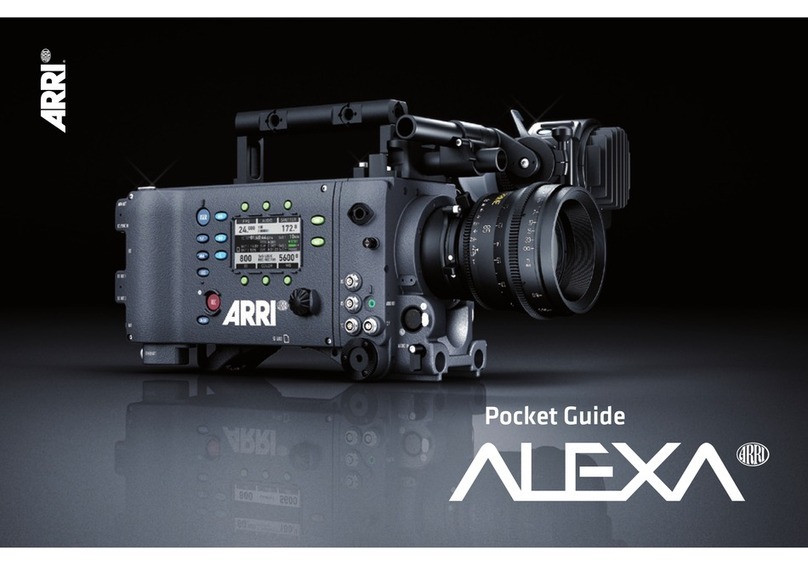
ARRI
ARRI ALEXA User manual

ARRI
ARRI ALEXA User manual
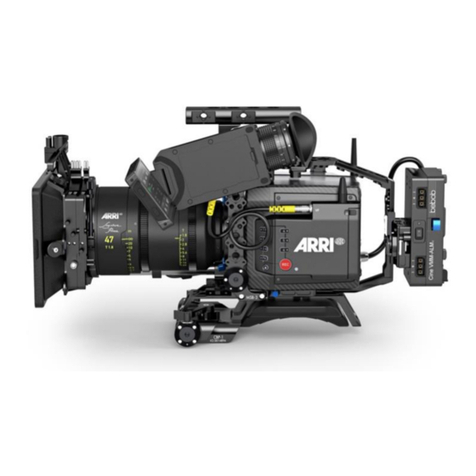
ARRI
ARRI ALEXA Mini LF SUP 7.1 Beta User manual

ARRI
ARRI AMIRA SUP 6.1.2 How to use

ARRI
ARRI ALEXA 35 User manual

ARRI
ARRI ALEXA Mini User manual

ARRI
ARRI 535 User manual
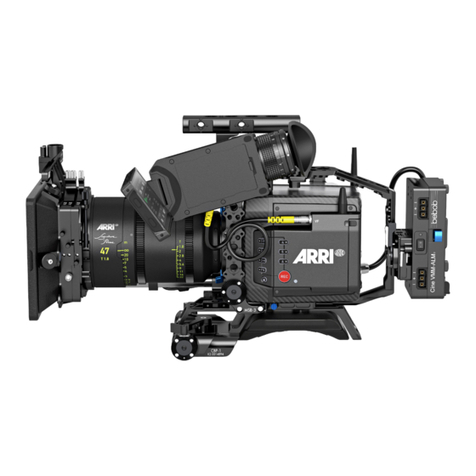
ARRI
ARRI ALEXA Mini LF How to use
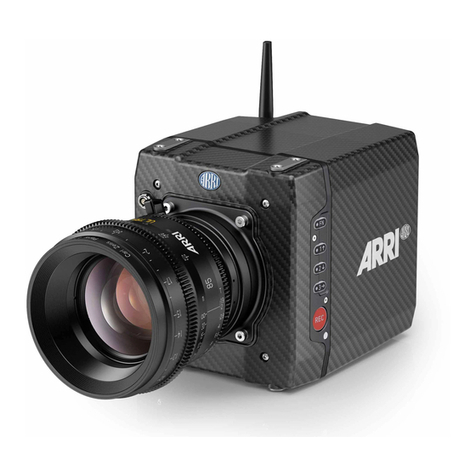
ARRI
ARRI ALEXA Mini How to use
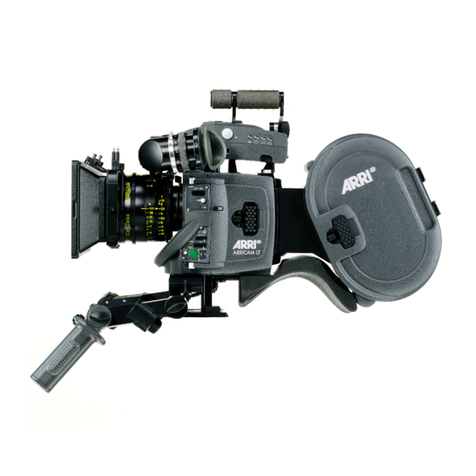
ARRI
ARRI Arricam Lite User manual

ARRI
ARRI ARRIFLEX 435 XTreme User manual
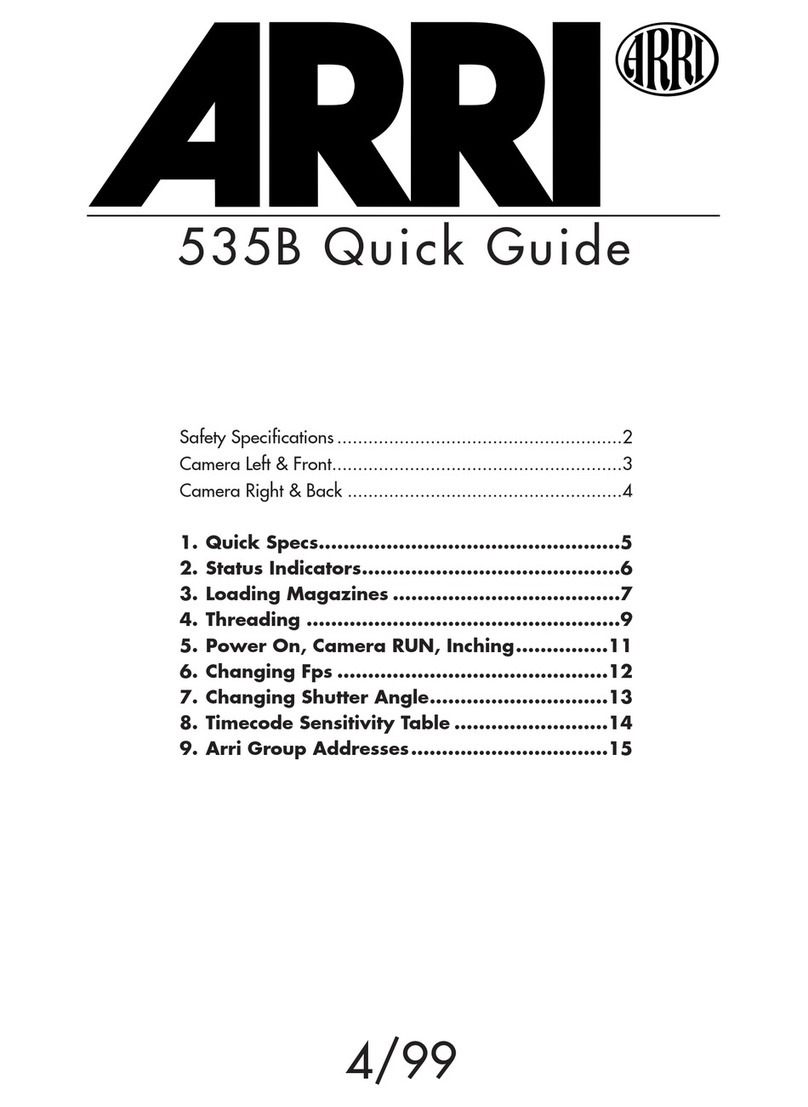
ARRI
ARRI 535B Operator's manual
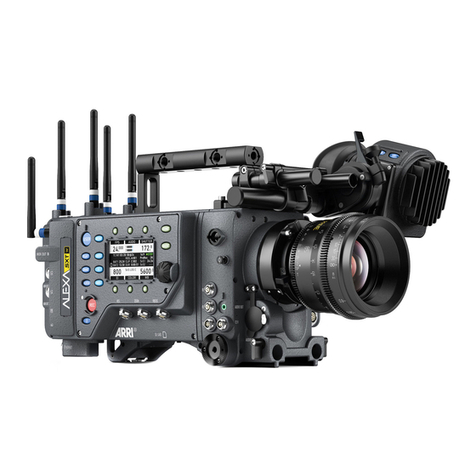
ARRI
ARRI ALEXA SXT W User manual
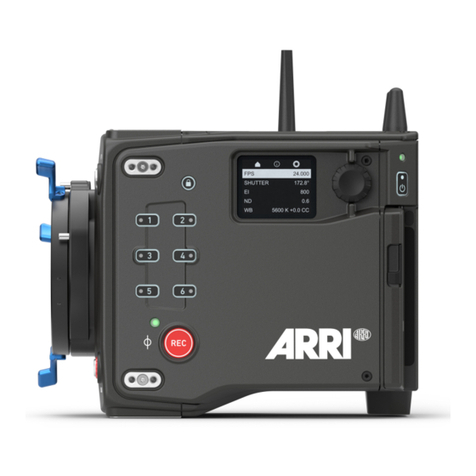
ARRI
ARRI ALEXA 35 User manual

ARRI
ARRI AMIRA SUP 4.0 How to use

ARRI
ARRI ALEXA User manual
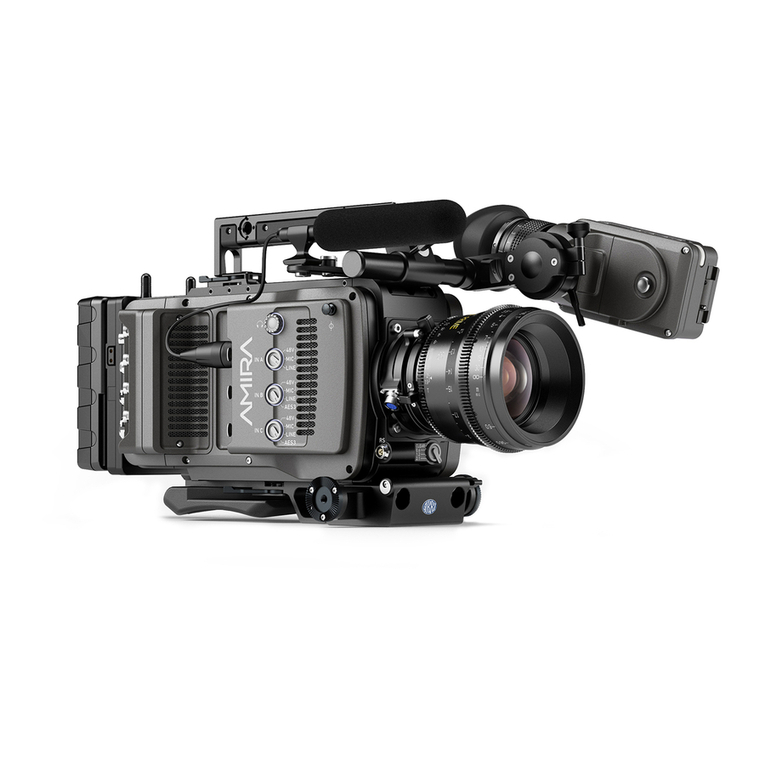
ARRI
ARRI Amira User manual
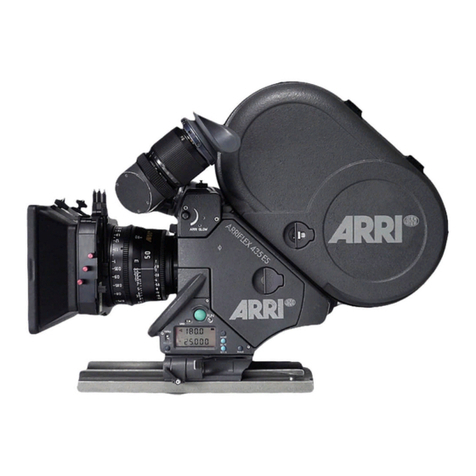
ARRI
ARRI ARRIFLEX 435 XTreme User manual


